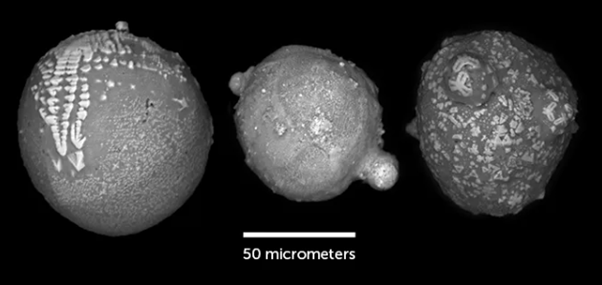Traces of dust particles in Antarctic ice are 2.3-2.7 million years old, analysis suggests. This would make them the oldest legacy of an airburst: an asteroid that exploded in the atmosphere, rather than hitting the ground while large enough to leave a mark. The discovery could be the first step on a path that enables us to assess the danger of these events in future.
Asteroids or comets that leave giant impact craters when they hit the Earth can change the course of history, but airbursts are more common. As the Chelyabinsk explosion revealed, airbursts can do a fair bit of damage to those nearby – and the Tunguska event would have been far more destructive if it had hit an inhabited area.
Indeed, according to some calculations, the cumulative threat to life from the many airbursts the Earth experiences is greater than from the much larger, but also much rarer, crater-forming events.
“All the energy is released in the atmosphere in the form of shock waves and thermal radiation,” study author Dr Matthias van Ginneken of the University of Kent told ScienceNews.
Airbursts must have been happening since the Earth first gained an atmosphere, but their legacy is erased far more quickly than craters, some of which last billions of years. In most circumstances, rain, other sources of dust, and biological activity quickly remove our capacity to identify ancient airbursts.
Ice can act as a preserver, but alpine glaciers usually carry the remnants away even where they don’t melt. This makes Antarctica – particularly parts where snow builds up slowly – the best and possibly only chance to find such evidence.
Two sets of debris have been found in Antarctica that are thought to be from airbursts 430 and 480 thousand years ago. Now, a team led by van Ginneken have presented evidence particles more than five times as old were from a similar event.
The dust field known as BIT-58 was first found 30 years ago in Antarctica’s Allan Hills, site of the famous Martian meteorite, once thought to carry evidence of life. Around 90 percent of the particles are chondritic (coming from unmodified stony meteorites), so it was not hard to see that this was the remnant of a visitor from space, rather than a volcanic eruption. This prompted the extraction of around 100 kilograms (220 pounds) of dust-laden ice and its transfer to McMurdo Station for analysis.
What was not clear when this was initially done was whether the spherules of meteoritic material came from an impact whose crater we had not yet found, or if they were the product of an airburst.
Hundreds of dust particles were found in the ice. After removing terrestrial contamination, the team studied 116 of them with an electron probe micro analyzer and an ion beam. Around 30 percent were found to be perfectly spherical, as is often the case for particles produced in atmospheric impacts.

Meteoritic spherules found in Antarctica’s Allan Hills. Chemical analysis suggests they are consistent with a type of asteroid known as an ordinary chondrite that broke up in the atmosphere
Image Courtesy of Matthias van Ginneken
The authors note the absence of microtektites that form when the heat of impact melts Earthly material, or the translucent microkrystites that condense from the impact plume. Instead, the composition matches that from “touchdown scenarios” where the jet of superheated gas, produced by parts of the asteroid vaporizing, maintains momentum until reaching the ground. Van Ginneken told ScienceNews that touchdowns are like; “A huge torch touching the ground and vaporizing everything.” One of the two younger Antarctic events also appears to have been a touchdown scenario.
“I think that my work is the first essential step to understand what residues of large airbursts look like in the geological record,” van Ginneken told IFLScience. “The next step will be to find more examples of such events, particularly in other environments (e.g., lower latitudes). This would allow us to establish a protocol to identify airburst residues with a high degree of confidence and, eventually, help us determine the frequency of such events in the past.”
Van Ginneken added; “We could try and include the spherules we already have in numerical models of airbursts, which could potentially help understand their formation and geographical distribution. This could help us figure out a link between specific properties of spherules (e.g., size range) and size of airbursts and, thus, their destructive potential.”
The study is published open access in the journal Earth and Planetary Science Letters
Source Link: Dust From 2.5-Million-Year-Old Meteorite May Be Oldest Evidence Of An Asteroid Airburst